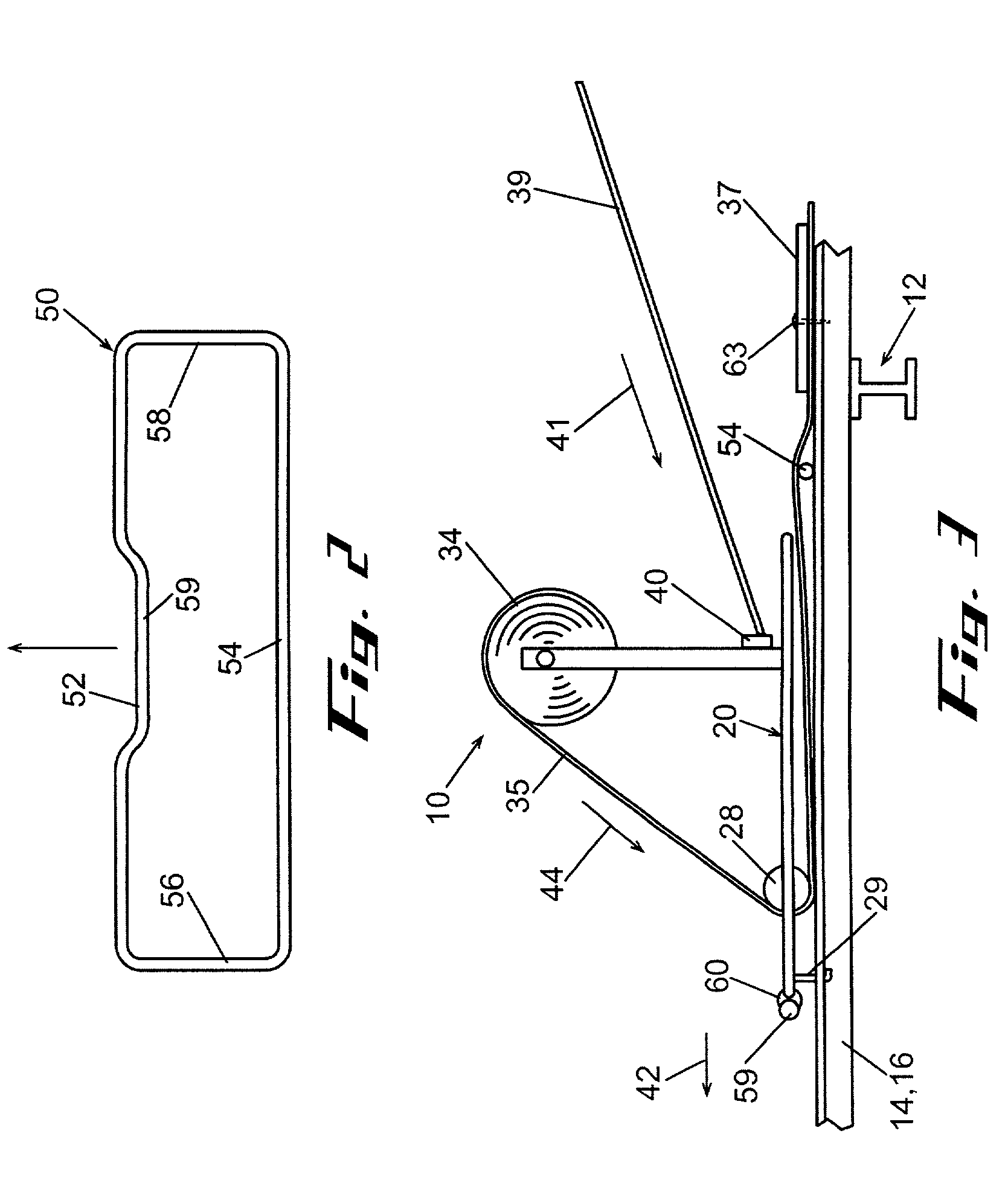Insulation support for roof insulation applicator
a technology for roof insulation and applicators, which is applied in the direction of roofs, building materials handling, construction, etc., can solve the problems of lack of experience and capability of installers, affecting the installation process, and the center portion of sheets without support, etc., and achieves the effect of less effor
- Summary
- Abstract
- Description
- Claims
- Application Information
AI Technical Summary
Benefits of technology
Problems solved by technology
Method used
Image
Examples
Embodiment Construction
[0032]Referring now in more detail to the drawings, in which like numerals indicate like parts throughout the several views, FIG. 1 is a perspective illustration of a roof insulation support carriage 10 mounted on a conventional, partially completed roof of an industrial building. The roof includes a plurality of parallel, inclined rafters 12 (only one shown) and a plurality of parallel, horizontally extending purlins, such as the pair of purlins 14 and 16. Each purlin includes a central web 17 and lower and upper oppositely facing flanges 18 and 19.
[0033]The roof insulation support carriage 10 includes a rectangular support frame 20 and a vertical reel support 22 mounted on and extending upwardly from the frame. The support frame 20 includes longitudinally extending side bars 24A and 24B and laterally extending cross bars 26A and 26B that form the rectangular shape of the support frame, and cross roller 28 that is rotatably supported by its axle to side bars 24A and 24B. The suppor...
PUM
 Login to View More
Login to View More Abstract
Description
Claims
Application Information
 Login to View More
Login to View More - R&D
- Intellectual Property
- Life Sciences
- Materials
- Tech Scout
- Unparalleled Data Quality
- Higher Quality Content
- 60% Fewer Hallucinations
Browse by: Latest US Patents, China's latest patents, Technical Efficacy Thesaurus, Application Domain, Technology Topic, Popular Technical Reports.
© 2025 PatSnap. All rights reserved.Legal|Privacy policy|Modern Slavery Act Transparency Statement|Sitemap|About US| Contact US: help@patsnap.com



